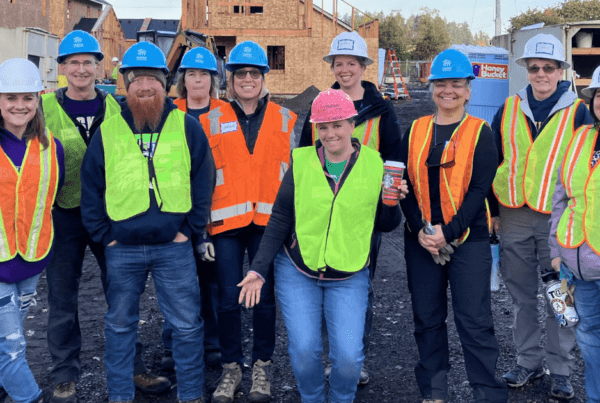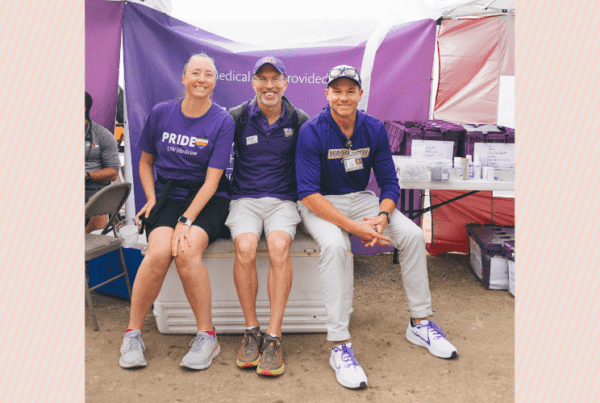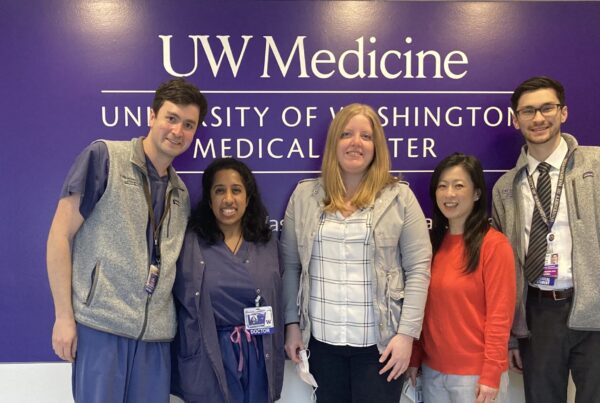Highlights | Preventative testing
- Long-term care facilities are at high risk for outbreaks of COVID-19.
- UW Medicine and Public Health – Seattle & King County have created drop teams to test local long-term care facilities for COVID-19.
- UW Medicine’s three-phase plan helps test, educate and triage facilities to reduce burden on acute care hospitals and emergency services.
Long-term care facilities are high-risk settings for severe outbreaks of COVID-19. Historically, these types of care facilities have seen high rates of infection and outbreak since they often serve an older population with underlying health conditions and have frequent movement of providers between facilities.
UW Medicine, with Public Health – Seattle & King County, is working hard to prevent and manage COVID-19 outbreaks in long-term care facilities and has shared its recommendations of their three-phase response plan with the Washington State Department of Public Health.
Here’s how 25 drop teams and a multidisciplinary support team have been improving outcomes at local long-term care facilities.
Lessons learned from Life Care Center of Kirkland
Life Care Center of Kirkland was the first long-term care facility to have a major outbreak in the U.S.
“There were lots of lessons from Life Care Center of Kirkland,” says Danna Lei, ARNP, UW Medicine Post Acute Care Lead and member of UW Medicine’s COVID-19 drop team. “What they needed at the beginning was a team of people to come in and rapidly test to see how much of their building was affected and to triage.”
And that’s where the COVID-19 drop team, a group of medical professionals performing testing and infection control, is essential. Lei says that by conducting a fast sweep of testing, long-term care facilities can be effectively triaged, reducing burden on the local acute-care hospitals and emergency services.
Based on the outcomes and lessons of Life Care Kirkland, UW Medicine’s response plan includes three phases:
- Test current symptomatic residents.
- Provide infection-control education, prevention and planning.
- Deploy teams to provide on-site assistance with testing, clinical assessment and triage.
Testing and triage
From the drop-in crew to the Post Acute Care team and infectious disease experts in collaboration with UW Medicine laboratories, drop teams are a multidisciplinary effort. And as the term “drop-in” suggests, they are quick, but it take lots of preparatory work to make the process so smooth.
The drop teams test anywhere from 60-300 patients per facility, so they need adequate PPE and labeled test kits to make the process efficient.
“Once we get into the building, teams go in pairs,” says Lei. “There is a clean person, who stays out of the room and watches the hot person go into the room. The hot person is in full gear: goggles, gown, gloves and N-95 mask.”
Using the buddy system is important to keep on track from don to doff. Each testing pair has 10-20 patients to test depending on the size of the care facility. They keep each other safe and on protocol, provide breaks to prevent fatigue and offer a sense of emotional support.
Lei says after working through the initial kinks in the workflow and defining their process, the drop team can now get in and out of a building within an hour and a half time frame.
The team has each drop down to a science, but to keep this program working they rely on communication with skilled nursing partners and the Regional COVID-19 Coordinating Center to work within the context of the larger healthcare system.
“Most of our skilled nursing partners try to keep patients in the facility if not too acute,” says Lei. “There is an awareness of the larger healthcare system and we want to support the hospital system’s ability to serve patients with acute care needs.”
Transparency and communication between all entities is what keeps both the long-term care centers and the larger regional hospital system from being overwhelmed. And that’s a testament to the education in Phase 2, keeping everyone on the same page when it comes to process and triage protocols.
Respite for skilled nursing facilities
“Access to testing in the skilled nursing facility world is limited. Community lab partners have not been able to amp up the response that is needed,” says Lei. “What we hear from the community is that they are waiting 5-14 days to get results and facilities burn through PPE waiting to hear.”
So it’s a relief for patients and the facilities to have results within 24 hours.
“Skilled nursing facilities have received lots of harsh press,” says Lei. “There is a perception that the nursing facilities aren’t doing enough, but they are working incredibly hard with the limited resources that they have.”
Generosity of our UW Medicine community
“First and foremost, there are amazing people who work for UW Medicine and show up in generous ways for our community,” says Lei. “Everyone is giving.”
The drop team still work their hospital jobs, so being part of the drop team is on their own time. Lei says that people bring food and coffee and arrive with an “I’m here to help, tell me what to do” attitude.
“In this unprecedented time, we have seen all the good come out and show up,” she says.


